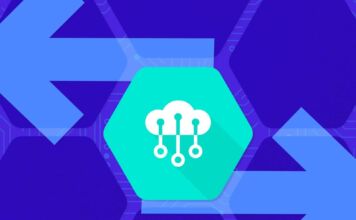
In my previous post, I gave an explanation of basic IoT device management and why it’s insufficient for certain kinds of massive-scale IoT deployments. In addition to basic IoT device management, contextual IoT device management is necessary to ensure success when dealing with IoT solutions involving thousands to millions of devices.
In this post, I explore some of the key aspects of contextual IoT device management, with real examples that demonstrate why you need to manage devices contextually if you’re building, buying, and/or implementing massive-scale IoT solutions.
Identify and Address Issues
When building, buying and/or implementing IoT solutions, it’s critical to assume that devices are going to experience issues. The world is imperfect. Trying to make an IoT solution perfect is an impossible and foolhardy endeavor. If you have one million devices, all it takes is a failure rate of 0.1 percent, and you already have 1000 devices that will fail. For IoT solutions with devices expected to last for years in harsh conditions, the percentage of devices that will experience issues at some point increases dramatically.
Issues with devices can take many forms, including hardware defects in manufacturing, firmware bugs, device failures due to extreme temperatures or weather conditions, degraded performance from wear-and-tear, dying batteries—the list goes on. It’s therefore essential first to be able automatically to identify, and then be equipped to address issues, with IoT devices.
Let’s look at an example in which you have thousands to millions of devices in an agricultural setting. What happens when a device stops communicating? If there’s an issue with the device, you’ll want to replace that device with a new device. Alternatively, if the device’s battery is simply drained, you’ll want to replenish the battery in that device.
In either case, you’ll first need to know where the device is located. If the devices don’t have a GPS module, this means that when the devices are installed out in the fields, you’ll probably need to record their coordinates (latitude/longitude) as part of the installation process, so that you can visualize them in a user interface (UI). These installation and visualization capabilities would need to be included as part of the IoT solution.
In addition, it would be costly to replace or replenish individual devices, so instead, you should probably hunt down and address multiple devices at a time. Rather than replenishing drained batteries after they’ve already died (and thus have ceased to provide you with data), you’ll want to know which devices are getting close to being fully drained. But what does “close” mean? Where’s the threshold? Devices may be able to report the percentage of battery life remaining, but what does “10 percent battery life” translate into? A year? A few months? A few weeks? A day?
The rate of battery drain depends on usage, and usage depends on the Applications. For a Applications like agricultural IoT, the battery usage will likely be relatively consistent and, therefore, predictable. However, in asset tracking Applications, the usage can be dependent on how much the assets are moving, which is inherently difficult to predict with high accuracy. To make such a prediction, the IoT solution will need to determine what usage is “normal” and use that as a baseline for predicting battery life remaining for devices.
As you can see, the ability to automatically identify and then be equipped to address potential issues with devices is heavily dependent on the context of the Applications and the business needs that inspired it. This is why you need contextual IoT device management.
Classify Devices into Contextual States
The previous section focused on issues with devices, whether that’s an issue such as a defect that prevents a device from communicating, or simply that the device’s battery has drained and is in need of replacement/replenishment. However, there can be situations in which a device is operating as expected without any issues, but there’s certain information that’s important to highlight for users.
Let’s return to the agricultural example, in which you might have devices attached to mobile agricultural equipment (e.g. a tractor) that enable that equipment to be tracked. The devices will likely be using GPS to get location data for the tractor, but unfortunately, GPS doesn’t work effectively when vehicles are inside buildings (here’s how GPS works). If all you show on the UI is the last known location of the tractor, and that tractor is now being stored inside a building, the GPS location won’t reflect the actual location of the tractor and can confuse users and/or geofences.
In this scenario, there are no issues with the device itself. However, the contextual state that the device is in (i.e. inside a building) is important to the functionality of the IoT solution. Therefore, you can use contextual data to classify the device—and by extension, the tractor—into a state (e.g. “indoors”) that provides helpful information to users so they’re not confused when the device can’t get an accurate GPS position inside a building.
However, the device itself can’t tell when it’s inside. All the device knows is that it isn’t getting a good signal from GPS satellites and therefore can’t acquire an accurate GPS position. Is it because the GPS satellite constellation just happens to be in a bad position at this particular moment? Is it because of adverse weather conditions? Both? Or maybe neither, and the vehicle is in fact indoors?
Conclusion
The above example from an agricultural IoT scenario is just one of many. The key takeaway is that contextual IoT device management is both essential and difficult. It’s essential because every IoT solution is different, and even the same IoT solution can be different when implemented within different businesses and contexts. It’s therefore difficult because this means that there isn’t a one-size-fits-all answer for effectively managing devices when you’re dealing with devices numbering in the thousands to millions.
I’m optimistic though! While we’ll never find a one-size-fits-all answer, we’ll continue to build the platforms and tools that will enable us to adapt IoT solutions quickly to varying businesses and contexts, unlocking the true potential of the Internet of Things.




 Contact Company
Contact Company





 Latest IoT News
Latest IoT News










